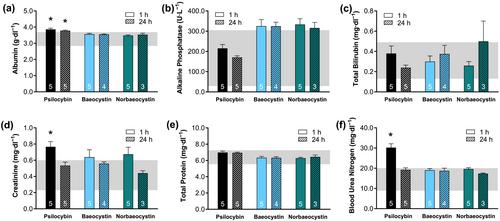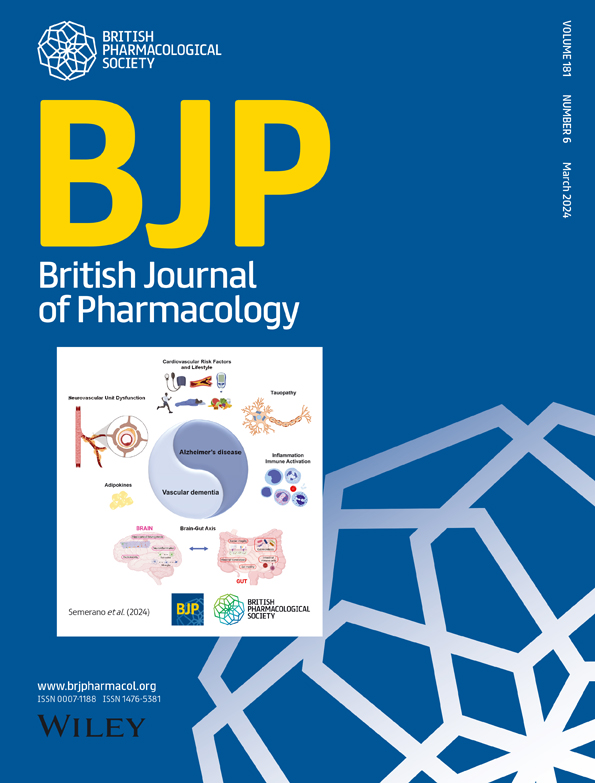Pharmacological and behavioural effects of tryptamines present in psilocybin-containing mushrooms
Abstract
Background and Purpose
Demand for new antidepressants has resulted in a re-evaluation of the therapeutic potential of psychedelic drugs. Several tryptamines found in psilocybin-containing “magic” mushrooms share chemical similarities with psilocybin. Early work suggests they may share biological targets. However, few studies have explored their pharmacological and behavioural effects.
Experimental Approach
We compared baeocystin, norbaeocystin and aeruginascin with psilocybin to determine if they are metabolized by the same enzymes, similarly penetrate the blood–brain barrier, serve as ligands for similar receptors and modulate behaviour in rodents similarly. We also assessed the stability and optimal storage and handling conditions for each compound.
Key Results
In vitro enzyme kinetics assays found that all compounds had nearly identical rates of dephosphorylation via alkaline phosphatase and metabolism by monoamine oxidase. Further, we found that only the dephosphorylated products of baeocystin and norbaeocystin crossed a blood–brain barrier mimetic to a similar degree as the dephosphorylated form of psilocybin, psilocin. The dephosphorylated form of norbaeocystin was found to activate the 5-HT2A receptor with similar efficacy to psilocin and norpsilocin in in vitro cell imaging assays. Behaviourally, only psilocybin induced head twitch responses in rats, a marker of 5-HT2A-mediated psychedelic effects and hallucinogenic potential. However, like psilocybin, norbaeocystin improved outcomes in the forced swim test. All compounds caused minimal changes to metrics of renal and hepatic health, suggesting innocuous safety profiles.
Conclusions and Implications
Collectively, this work suggests that other naturally occurring tryptamines, especially norbaeocystin, may share overlapping therapeutic potential with psilocybin, but without causing hallucinations.


 求助内容:
求助内容: 应助结果提醒方式:
应助结果提醒方式:


